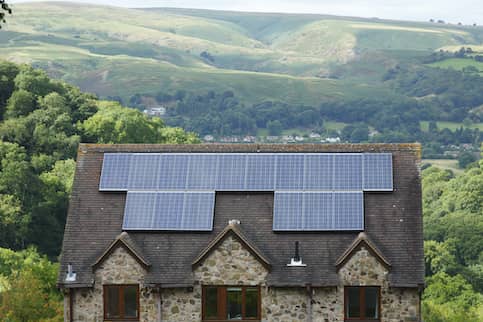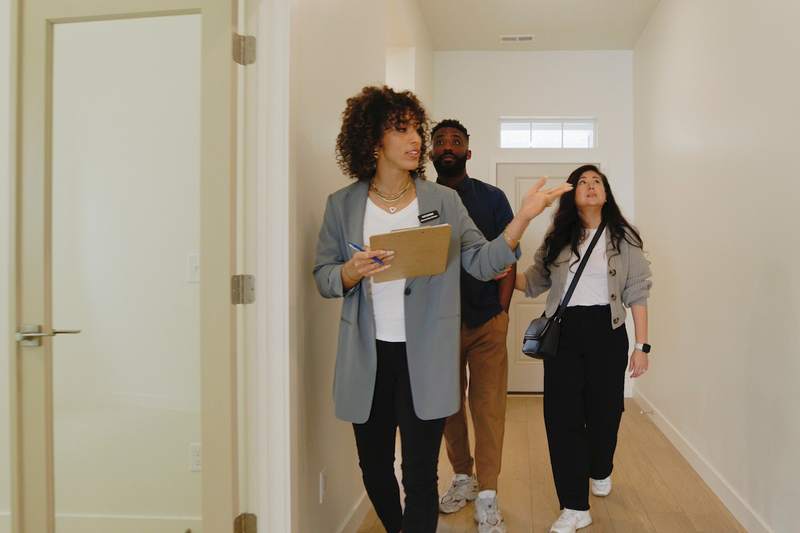While the pen-to-paper mortgage closing process has remained largely unchanged, the rest of the home buying process – including house hunting and mortgage applications – takes place primarily online these days.
It should therefore come as little surprise that the closing process has in many cases gone virtual as well. Electronic mortgage closings have become more common and accessible to both borrowers and lenders in recent years.
Electronic mortgage closings – more commonly known as eClosings – are meant to streamline the closing process and cut out additional fees such as those for copying and shipping. Typically performed using electronic tablets, eClosings reduce paper documents with electronic documents while saving a tree or two in the process.
If that all sounds appealing, let’s continue on to explore the ins and outs of eClosings when buying a home.
eClosing Definition
An eClosing is a mortgage closing with some or all of the process conducted digitally. More specifically, eClosings utilize a secure online portal to allow borrowers and lenders to electronically sign closing documents for real estate transactions.
Digital signatures can come in many forms. Examples of acceptable electronic signatures include:
- Typing your name into the space for your signature
- Uploading a snapshot of your signature to the document
- Tracing a finger or a stylus along the signature line
For a remote signing process, borrowers may use software such as DocuSign. Video conferencing programs can also be used to communicate with the other parties involved in the transaction and confirm the borrower’s identity and background.
Types Of eClosings
The term “eClosing” is a generally loose term that can refer to one of three main types of digital mortgage closings. The three types are:
- Hybrid eClosing: The most common type of eClosing, a hybrid eClosing involves a combination of electronic and “wet-ink” signatures. It requires an in-person meeting between the borrowers and the notary public.
- In-Person Electronic Notarization (IPEN): This eClosing also requires a face-to-face meeting, although all closing documents are signed electronically with a tablet or computer.
- Remote Online Notarization (RON): The most convenient eClosing process allows all parties to meet virtually via web video conference. All documents are eSigned and eNotarized.
See What You Qualify For
Buy A Home
Discover mortgage options that fit your unique financial needs.

Refinance
Refinance your mortgage to have more money for what matters.
Tap Into Equity
Use your home’s equity and unlock cash to achieve your goals.
How Does An Electronic Mortgage Closing Work?
The eClosing process is actually very similar to the traditional mortgage closing process. The same documents are signed, whether by hand or electronically, and the same parties are usually involved. The biggest difference lies in the type of eClosing available to you and whether it’s hybrid, IPEN or RON.
A hybrid eClosing still requires some face-to-face time with mortgage lenders so you can provide a wet signature – meaning ink to paper – on some of the more important documents, which include:
- The property deed
- The mortgage deed, or the deed of trust
- The promissory note
Documents such as the Closing Disclosure and escrow disclosure are usually available to sign electronically. An eNote – or electronic promissory note – may also be available for you to digitally sign.
It’s important to note that even a single electronic signature categorizes the whole process as an eClosing.
In the case of a RON closing process, the borrower is walked through the documents by the notary over video. The notary will also remotely perform other notarial acts – such as confirming the borrower’s identity and other personal information – during this meeting.
Pros And Cons Of Mortgage eClosings
It’s entirely possible that the benefits of eClosings could make these online closings the future standard for the mortgage industry. That’s not to suggest, however, that virtual mortgage closings are without drawbacks.
Advantages Of An eClosing
Ways an eClosing can benefit borrowers and lenders include:
- Allowing for more flexible scheduling to conduct the closing process
- Cutting down on time and money spent on closing paperwork
- Detecting missed signatures and other mistakes immediately
Disadvantages Of An eClosing
While an eClosing can be convenient, possible drawbacks include:
- Transactions requiring access to a tablet or computer, as well as reliable internet access
- Creating a barrier for buyers or sellers who aren’t as technologically savvy
- Some eClosing types – particularly RONs – only being available in certain states
Best Practices For A Remote House Closing
For many home buyers, conducting important business over video may seem strange, off-putting and even a little unofficial. Rest assured that your eSignature is just as legitimate as your handwritten one.
To ease into this different process, consider these best practices:
- Check your closing options. Ask your loan officer what eClosing options are available in your home state.
- Confirm your meeting type. Make sure you have the ability to participate in a video conference.
- Verify your Wi-Fi. Ensure you have a stable internet connection.
- Listen closely. During the eClosing call, pay close attention to all lender and notary instructions and sign in the correct spaces.
- Pay electronically. Cover your closing costs electronically with a bank-to-bank or wire transfer.
- Set up the key transfer. Finally, obtain the keys to your new home from the seller via mail or another delivery service.
When done right, a remote eClosing will allow you to close on your new home from the comfort of your old one.
FAQ
In conclusion, let’s unpack some important answers to a few frequently asked questions about eClosings.
Find A Mortgage Today and Lock In Your Rate!
Get matched with a lender that will work for your financial situation.
The Bottom Line
EClosings have been around for years now but became especially commonplace during the COVID-19 pandemic when social distancing was the way of the world. These days, home buyers may simply find the digital process more convenient. Lenders, too, can appreciate the cost-cutting and time-saving benefits of an eClosing.
While availability differs among the three types of eClosings, it’s worth talking with your mortgage broker or lender about your closing options.

Victoria Araj
Victoria Araj is a Staff Writer for Rocket Companies who has held roles in mortgage banking, public relations and more in her 15-plus years of experience. She has a bachelor’s degree in journalism with an emphasis in political science from Michigan State University, and a master’s degree in public administration from the University of Michigan.












